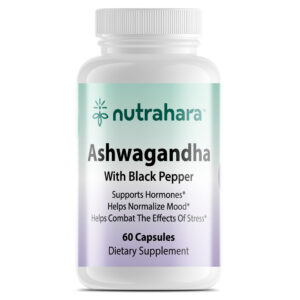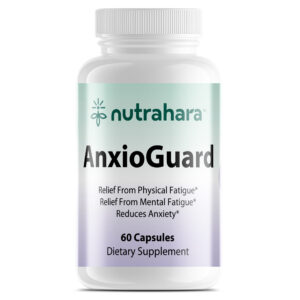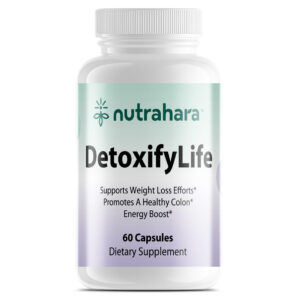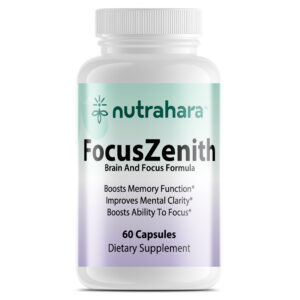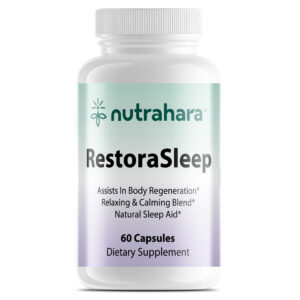
1. Introduction: Essential Oils for Stress
In today’s fast-paced world, women are constantly juggling multiple roles—career professionals, caregivers, partners, and friends—often neglecting their own well-being in the process. Stress and anxiety are not just fleeting emotions; they are deeply connected to hormonal fluctuations, lifestyle choices, and even social pressures unique to women. Whether it’s premenstrual tension, pregnancy-related emotional swings, or the mental fog of menopause, the impact of chronic stress can manifest in profound ways, from sleep disturbances and mood swings to digestive issues and accelerated aging.
While conventional medicine offers pharmaceutical solutions, many women seek holistic approaches that align with their bodies’ natural rhythms. This is where aromatherapy for anxiety emerges as a powerful yet underutilized tool. Essential oils, extracted from plants with centuries of medicinal use, can directly influence the nervous system, helping to lower cortisol levels, regulate mood, and create a sense of calm without side effects.
Unlike common relaxation techniques, essential oils for stress work through the olfactory system, rapidly triggering the limbic brain—the seat of emotions—within seconds of inhalation. This means that stress relief is not just psychological but also physiological, offering an immediate shift in mood and energy. From inhalation methods to massage applications, aromatherapy offers tailored solutions for every stage of a woman’s life, helping to restore balance, boost confidence, and nurture emotional well-being naturally.
This article explores the most effective aromatherapy techniques tailored specifically for women, highlighting powerful essential oils, practical application methods, and real-life testimonials from women who have successfully integrated aromatherapy into their self-care routines.
2. Understanding Stress and Anxiety in Women
Women experience stress and anxiety differently from men due to a complex interplay of hormonal fluctuations, societal expectations, and biological rhythms. From the reproductive years through menopause, shifting hormone levels influence emotional responses, making women more susceptible to anxiety disorders and chronic stress. These physiological changes, combined with everyday pressures such as career demands, caregiving responsibilities, and self-image concerns, create a perfect storm for emotional exhaustion.
While stress is a natural response to life’s challenges, prolonged exposure can wreak havoc on the body, leading to insomnia, weakened immunity, digestive disorders, and even premature aging. Women, in particular, may notice heightened anxiety around menstruation, during pregnancy, postpartum, and in the transition to menopause, as estrogen and progesterone fluctuations directly impact serotonin and cortisol levels.
This is where aromatherapy for anxiety becomes a game-changer. Unlike synthetic medications that merely mask symptoms, essential oils work with the body’s natural chemistry to restore emotional balance. Through inhalation or topical application, essential oils for stress activate the brain’s limbic system, regulating mood, lowering cortisol levels, and fostering a deep sense of relaxation. Whether diffused in the home, massaged into the skin, or infused into a warm bath, these natural solutions provide a gentle yet powerful way to manage stress and anxiety, addressing the root cause rather than just the symptoms.
3. Best Essential Oils for Stress and Anxiety Relief
Essential oils have been used for centuries to promote relaxation and emotional balance, but their power in aromatherapy for anxiety is still underutilized in modern wellness practices. Unlike synthetic medications that can lead to dependency or side effects, essential oils work naturally with the body’s chemistry, offering a holistic approach to stress relief. Each essential oil has unique properties that influence mood, reduce cortisol levels, and help women navigate the emotional challenges associated with hormonal shifts, work-life pressures, and daily stressors.
3.1 Lavender – The Ultimate Relaxant
Lavender is widely recognized for its calming properties, making it a cornerstone in essential oils for stress. It works by directly interacting with the nervous system, helping to reduce heart rate and blood pressure while promoting deep relaxation. Whether used in a diffuser, applied to pulse points, or infused into a bath, lavender is a must-have for women seeking natural relief from anxiety and insomnia.
3.2 Chamomile – A Gentle Mood Stabilizer
Chamomile is more than just a bedtime tea; its essential oil form is a potent stress reliever. Known for its ability to reduce anxiety and ease mood swings, chamomile is particularly beneficial for women experiencing PMS or menopause-related stress. Inhaling chamomile oil or blending it with a carrier oil for a gentle massage can provide instant relaxation.
3.3 Bergamot – The Uplifting Citrus Scent
Bergamot essential oil is a powerful mood enhancer that works by reducing cortisol levels and promoting a sense of joy. Unlike other citrus oils, bergamot has a unique ability to calm the nervous system while simultaneously uplifting the spirit, making it an excellent choice for women dealing with work-related stress or emotional fatigue.
3.4 Ylang Ylang – Balancing Hormonal Stress
Ylang ylang is renowned for its ability to lower stress hormones and increase self-confidence. Its sweet floral scent has a deeply calming effect, making it ideal for reducing nervous tension and restoring emotional balance. Diffusing ylang ylang before bedtime or adding a few drops to a warm bath can help women ease stress naturally.
3.5 Clary Sage – The Women’s Hormonal Ally
Clary sage is one of the most effective essential oils for stress, particularly for women experiencing hormonal imbalances. It helps regulate cortisol levels, reduce PMS symptoms, and alleviate menopausal anxiety. Using clary sage in a diffuser or applying it topically to the abdomen can provide noticeable relief from hormone-induced stress and emotional fluctuations.
By incorporating aromatherapy for anxiety into daily routines, women can harness the natural healing power of these essential oils to combat stress, promote emotional stability, and achieve a greater sense of well-being without relying on synthetic treatments.
4. Seven Aromatherapy Techniques to Instantly Reduce Stress
Integrating aromatherapy for anxiety into daily life can offer immediate and lasting relief from stress. Unlike prescription medications, which often come with side effects, essential oils provide a natural, non-invasive way to calm the nervous system and balance emotions. The right techniques enhance the therapeutic benefits of essential oils for stress, allowing women to create personalized self-care rituals that support mental and emotional well-being.
4.1 Diffusion for Continuous Calm
Diffusing essential oils in the home or workplace provides consistent stress relief throughout the day. A few drops of lavender, bergamot, or ylang ylang in a diffuser can help lower cortisol levels, improve focus, and create a tranquil environment.
4.2 Aromatherapy Massage for Deep Relaxation
Massaging diluted essential oils onto the skin enhances absorption and promotes relaxation. Blending clary sage or chamomile with a carrier oil and applying it to the temples, neck, and shoulders relieves tension and soothes the mind.
4.3 Bath Therapy – Soak Your Stress Away
Adding a few drops of essential oils for stress to a warm bath can create an immersive relaxation experience. Clary sage, ylang ylang, or chamomile help melt away tension while balancing hormones. Mixing the oils with Epsom salts enhances their calming effects.
4.4 Inhalation Therapy for Instant Relief
For fast-acting stress relief, inhaling essential oils directly can be highly effective. A drop of bergamot or lavender rubbed between the palms and inhaled deeply helps to quickly soothe the nervous system, reducing anxiety within seconds.
4.5 Aromatherapy Yoga and Meditation
Pairing aromatherapy for anxiety with mindfulness practices like yoga and meditation deepens relaxation. Diffusing frankincense, sandalwood, or lavender during a session promotes a heightened state of calm, allowing for deeper breathing and mental clarity.
4.6 Pillow and Linen Sprays for Better Sleep
Poor sleep exacerbates stress, making nighttime rituals crucial. A homemade spray with lavender, chamomile, and clary sage can be misted onto pillows and sheets to encourage restful sleep and prevent nighttime anxiety.
4.7 DIY Calming Blends for On-the-Go Relief
For stress relief anytime, anywhere, portable essential oil roll-ons or inhalers are a must. Blending bergamot, ylang ylang, and lavender in a roller bottle offers instant relaxation when applied to pulse points.
By incorporating these seven techniques, women can harness the power of essential oils for stress to transform their emotional well-being. Whether through inhalation, massage, or diffusion, aromatherapy provides an easy and effective way to manage anxiety and maintain inner balance.
5. Real-Life Testimonials: Women Who Found Relief with Aromatherapy
Aromatherapy has transformed the lives of countless women by providing natural and effective relief from stress and anxiety. These real-life testimonials highlight how essential oils have supported emotional well-being at different life stages.
5.1 Sarah, 42 – Post-Menopausal Anxiety Relief with Lavender & Bergamot
Sarah had been struggling with post-menopausal anxiety, frequent mood swings, and restlessness at night. She found that incorporating aromatherapy into her routine significantly improved her well-being.
Her Experience:
- Diffusing lavender oil in her bedroom helped her relax and fall asleep faster.
- Using bergamot oil in a personal inhaler reduced mid-day stress and improved her mood.
- A nightly lavender and chamomile bath soak helped relieve tension and promote restful sleep.
“I never realized how much scent could impact my emotions. My anxiety levels have dropped, and I finally feel at peace.”
5.2 Maria, 35 – Pregnancy Stress Managed with Chamomile & Ylang Ylang
Pregnancy brought Maria unexpected emotional ups and downs, making it difficult for her to relax. She turned to aromatherapy for a safe and effective way to manage stress.
Her Experience:
- Using chamomile oil in a pillow spray improved her sleep quality.
- Inhaling ylang ylang oil during meditation sessions helped reduce feelings of overwhelm.
- Adding a few drops of essential oil to a warm foot soak eased tension and promoted relaxation.
“Aromatherapy became my comfort during pregnancy. It calmed my mind, helped me sleep, and made me feel more centered.”
5.3 Jessica, 50 – Menopause-Induced Insomnia Eased with Clary Sage & Lavender
Menopause left Jessica struggling with insomnia and night sweats, making it nearly impossible to get quality rest. Aromatherapy provided a natural solution.
Her Experience:
- Clary sage oil blended with coconut oil and applied to the abdomen helped balance hormonal stress.
- Lavender oil linen spray made it easier to fall and stay asleep.
- A diffuser blend of sandalwood and bergamot created a calming nighttime atmosphere.
“I was skeptical at first, but these oils truly changed my nights. I wake up feeling more refreshed and less irritable.”
5.4 Lisa, 38 – Work Stress Reduced with DIY Aromatherapy Massage
Lisa’s demanding job left her feeling drained and anxious. She found that incorporating aromatherapy into her self-care routine significantly improved her mental well-being.
Her Experience:
- A DIY roll-on blend with lavender and bergamot provided instant relaxation during stressful workdays.
- Evening aromatherapy massages with a blend of chamomile and ylang ylang helped ease muscle tension.
- Diffusing sandalwood oil while working improved focus and reduced anxiety.
“Aromatherapy has become my go-to stress relief tool. It’s a simple, natural way to reset my mind and body after a long day.”
These women’s experiences show that aromatherapy is more than just a luxury—it is a practical and effective tool for managing stress and anxiety. Whether dealing with hormonal changes, pregnancy stress, or workplace anxiety, essential oils offer a natural path to emotional balance and relaxation.
6. Additional Tips for Maximizing Aromatherapy Benefits
Aromatherapy is most effective when used correctly and consistently. To ensure maximum benefits, consider the following expert tips:
6.1 Choose High-Quality, Pure Essential Oils
Not all essential oils are created equal. Low-quality or synthetic oils may lack therapeutic properties and could even contain harmful additives.
How to Ensure Quality:
- Look for 100% pure, organic essential oils without synthetic fillers.
- Check for botanical names on labels to ensure authenticity.
- Purchase from trusted brands that provide third-party purity testing.
6.2 Use Proper Dilution for Skin Application
Applying undiluted essential oils directly to the skin may cause irritation or sensitivity.
Safe Dilution Guidelines:
- Mix essential oils with a carrier oil like jojoba, coconut, or almond oil before applying to the skin.
- Use a 2% dilution (12 drops of essential oil per 1 ounce of carrier oil) for general use.
- For sensitive skin, reduce to 1% dilution (6 drops per 1 ounce of carrier oil).
6.3 Store Essential Oils Properly
Improper storage can cause essential oils to degrade and lose their potency.
Storage Tips:
- Keep oils in dark glass bottles to protect them from light exposure.
- Store in a cool, dry place away from direct sunlight and heat.
- Ensure bottles are tightly sealed to prevent oxidation.
6.4 Experiment with Blending Oils for Enhanced Effects
Combining different essential oils can amplify their stress-relief benefits.
Blending Tips:
- Mix lavender + bergamot for a balance of relaxation and mood enhancement.
- Combine chamomile + clary sage for hormone-related stress relief.
- Use ylang ylang + sandalwood for deep emotional grounding.
By following these tips, aromatherapy can become an integral and effective part of a long-term wellness routine.
7. Conclusion
Stress and anxiety are constant challenges in a woman’s life, influenced by hormonal changes, daily responsibilities, and emotional demands. While conventional methods like medication and therapy offer solutions, many women are seeking natural alternatives that align with their bodies’ rhythms. Aromatherapy for anxiety provides a gentle yet powerful way to restore balance, offering a holistic approach to mental and emotional well-being.
By integrating essential oils for stress into daily routines, women can naturally lower cortisol levels, promote relaxation, and support a healthier mind-body connection. Whether through diffusion, massage, bath therapy, or inhalation, essential oils like lavender, bergamot, chamomile, and clary sage have been shown to reduce anxiety, improve sleep, and uplift mood.
The key to lasting relief is consistency. Aromatherapy is not just about an occasional spa-like experience but about creating simple rituals—adding a few drops of essential oil to a pillow, diffusing calming scents in the home, or carrying a personalized roll-on for stress relief throughout the day.
By making aromatherapy a part of self-care, women can reclaim their emotional well-being, enhance their confidence, and manage stress naturally. The power of scent is more than just fragrance—it’s a pathway to healing, relaxation, and a calmer, more centered life.
Written by the Nutrahara Team
This article was developed by the Nutrahara team of nutrition scientists and naturopaths, who specialize in formulating safe, effective, and science-backed supplements for women’s health. Every ingredient we use is carefully selected to support your body’s unique needs—naturally. Follow us on LinkedIn for expert insights and updates on our latest wellness solutions.

